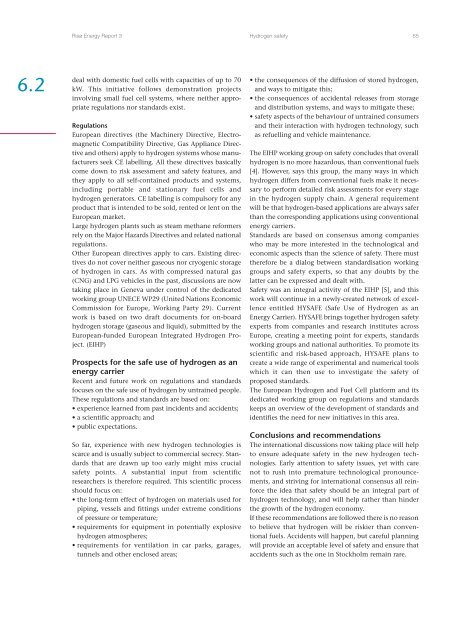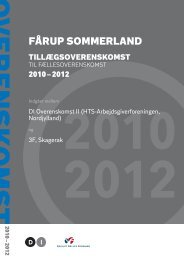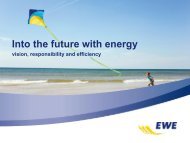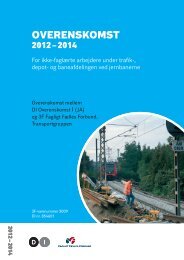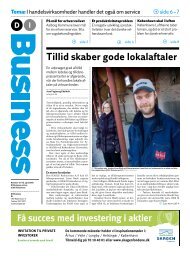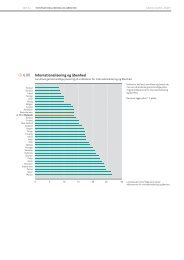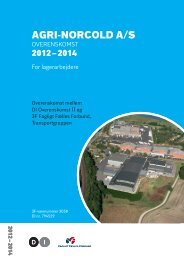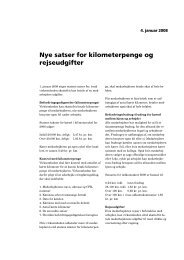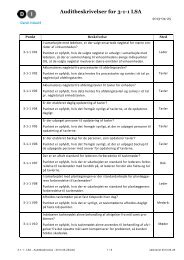Hydrogen and its competitors, 2004
Hydrogen and its competitors, 2004
Hydrogen and its competitors, 2004
You also want an ePaper? Increase the reach of your titles
YUMPU automatically turns print PDFs into web optimized ePapers that Google loves.
Risø Energy Report 3<strong>Hydrogen</strong> safety 656.2deal with domestic fuel cells with capacities of up to 70kW. This initiative follows demonstration projectsinvolving small fuel cell systems, where neither appropriateregulations nor st<strong>and</strong>ards exist.RegulationsEuropean directives (the Machinery Directive, ElectromagneticCompatibility Directive, Gas Appliance Directive<strong>and</strong> others) apply to hydrogen systems whose manufacturersseek CE labelling. All these directives basicallycome down to risk assessment <strong>and</strong> safety features, <strong>and</strong>they apply to all self-contained products <strong>and</strong> systems,including portable <strong>and</strong> stationary fuel cells <strong>and</strong>hydrogen generators. CE labelling is compulsory for anyproduct that is intended to be sold, rented or lent on theEuropean market.Large hydrogen plants such as steam methane reformersrely on the Major Hazards Directives <strong>and</strong> related nationalregulations.Other European directives apply to cars. Existing directivesdo not cover neither gaseous nor cryogenic storageof hydrogen in cars. As with compressed natural gas(CNG) <strong>and</strong> LPG vehicles in the past, discussions are nowtaking place in Geneva under control of the dedicatedworking group UNECE WP29 (United Nations EconomicCommission for Europe, Working Party 29). Currentwork is based on two draft documents for on-boardhydrogen storage (gaseous <strong>and</strong> liquid), submitted by theEuropean-funded European Integrated <strong>Hydrogen</strong> Project.(EIHP)Prospects for the safe use of hydrogen as anenergy carrierRecent <strong>and</strong> future work on regulations <strong>and</strong> st<strong>and</strong>ardsfocuses on the safe use of hydrogen by untrained people.These regulations <strong>and</strong> st<strong>and</strong>ards are based on:• experience learned from past incidents <strong>and</strong> accidents;• a scientific approach; <strong>and</strong>• public expectations.So far, experience with new hydrogen technologies isscarce <strong>and</strong> is usually subject to commercial secrecy. St<strong>and</strong>ardsthat are drawn up too early might miss crucialsafety points. A substantial input from scientificresearchers is therefore required. This scientific processshould focus on:• the long-term effect of hydrogen on materials used forpiping, vessels <strong>and</strong> fittings under extreme conditionsof pressure or temperature;• requirements for equipment in potentially explosivehydrogen atmospheres;• requirements for ventilation in car parks, garages,tunnels <strong>and</strong> other enclosed areas;• the consequences of the diffusion of stored hydrogen,<strong>and</strong> ways to mitigate this;• the consequences of accidental releases from storage<strong>and</strong> distribution systems, <strong>and</strong> ways to mitigate these;• safety aspects of the behaviour of untrained consumers<strong>and</strong> their interaction with hydrogen technology, suchas refuelling <strong>and</strong> vehicle maintenance.The EIHP working group on safety concludes that overallhydrogen is no more hazardous, than conventional fuels[4]. However, says this group, the many ways in whichhydrogen differs from conventional fuels make it necessaryto perform detailed risk assessments for every stagein the hydrogen supply chain. A general requirementwill be that hydrogen-based applications are always saferthan the corresponding applications using conventionalenergy carriers.St<strong>and</strong>ards are based on consensus among companieswho may be more interested in the technological <strong>and</strong>economic aspects than the science of safety. There musttherefore be a dialog between st<strong>and</strong>ardisation workinggroups <strong>and</strong> safety experts, so that any doubts by thelatter can be expressed <strong>and</strong> dealt with.Safety was an integral activity of the EIHP [5], <strong>and</strong> thiswork will continue in a newly-created network of excellenceentitled HYSAFE (Safe Use of <strong>Hydrogen</strong> as anEnergy Carrier). HYSAFE brings together hydrogen safetyexperts from companies <strong>and</strong> research institutes acrossEurope, creating a meeting point for experts, st<strong>and</strong>ardsworking groups <strong>and</strong> national authorities. To promote <strong>its</strong>scientific <strong>and</strong> risk-based approach, HYSAFE plans tocreate a wide range of experimental <strong>and</strong> numerical toolswhich it can then use to investigate the safety ofproposed st<strong>and</strong>ards.The European <strong>Hydrogen</strong> <strong>and</strong> Fuel Cell platform <strong>and</strong> <strong>its</strong>dedicated working group on regulations <strong>and</strong> st<strong>and</strong>ardskeeps an overview of the development of st<strong>and</strong>ards <strong>and</strong>identifies the need for new initiatives in this area.Conclusions <strong>and</strong> recommendationsThe international discussions now taking place will helpto ensure adequate safety in the new hydrogen technologies.Early attention to safety issues, yet with carenot to rush into premature technological pronouncements,<strong>and</strong> striving for international consensus all reinforcethe idea that safety should be an integral part ofhydrogen technology, <strong>and</strong> will help rather than hinderthe growth of the hydrogen economy.If these recommendations are followed there is no reasonto believe that hydrogen will be riskier than conventionalfuels. Accidents will happen, but careful planningwill provide an acceptable level of safety <strong>and</strong> ensure thataccidents such as the one in Stockholm remain rare.


